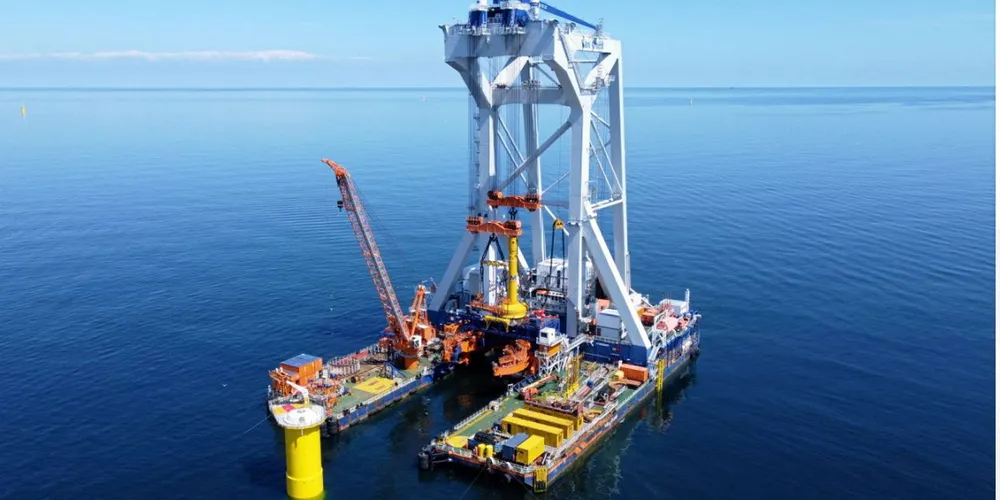Vessels market gets hotter still as offshore wind developers award deals for Poland and Taiwan
Brokers report record dayrates for turbine and foundation installation ships

Dutch contractor Van Oord has secured €500m ($535m) worth of contracts to supply offshore wind vessels for installing turbine foundations on Poland's Baltic Power wind farm and laying cables on the Greater Changhua 2b and 4 arrays in Taiwan.
The Baltic Power array will be located 23km from shore and feature 76 wind turbines with a total capacity of 1.14GW.
Expected to supply renewable energy to more than 1.5 million households in Poland, Baltic Power has been fêted as the country's first offshore wind farm.
Van Oord will transport and install 76 wind turbine foundations, each consisting of a monopile and a transition piece, and an additional two foundations for offshore substations.
The transport and installation of the foundations is scheduled to start in 2024 and is expected to be completed in summer 2025, Van Oord stated.
Back in Taiwan
The three export cables required for this project total approximately 175km in length, Van Oord stated, with operations are scheduled to start in 2024 and expected to be finished in 2025.
Van Oord completed cable installation works at Orsted's' Greater Changhua 1 and 2a array earlier this year.
Rising rates... faster payback
The dredging and offshore construction specialist did not reveal terms for the new contracts, but the contracts were awarded against a backdrop of rising rates.
In its latest report on offshore wind, London-based shipbroker Clarksons highlighted a record dayrate for a wind turbine installation vessel of $362,000 for one of Eneti's newbuild vessels, chartered for 120-180 days.
The report suggested that these rates implied full payback on a $327m newbuild investment in just 3.2 years.
The dayrate was described as an industry high for a contractual term of more than six months and followed on from a rate of up to $347,00 per day for a another Eneti newbuild contract awarded in September.
Eneti did not disclose which offshore wind project the WTIV will serve, but Clarksons suggested that Norway's Equinor and Polish partner Polenergia were the likely customers, for the 1.44GW Bałtyk II and Bałtyk III bottom-fixed wind projects in Poland.
To support this, Clarksons noted that Oslo listed Subsea 7 announced the very same day that its subsidiary Seaway 7 had secured a "substantial" contract from Equinor and Polenergia for 200km of inter-array cables for MFW Bałtyk II and MFW Bałtyk.
"Offshore dayrates have been steadily increasing, driven by robust demand in both the oil and gas sector and the offshore wind industry. This surge in dayrates is a result of heightened activity in these sectors, with offshore wind projects experiencing remarkable growth," Clarksons' offshore renewables director Jens Egenberg stated in the shipbroker's latest renewables report.
The Clarksons report showed a steady rise in dayrates for wind turbine installation vessels, floating foundation installation vessels and cable lay vessels (CLVs) since the price troughs of 2017.
"Contracts for these assets are being secured for the years 2026-2027, at record high rates, reflecting confidence in these markets. Limited newbuilding activity in the installation asset sectors is expected to continue exerting upward pressure on dayrates, making them a significant focus for industry stakeholders and investors" Egenberg wrote.
Clarksons noted that rates have also risen for support vessels, such as crew transfer vessels (CTV) and commissioning service operations vessels since 2020.
US concerns
Vessel availability has also been cited among the factors undermining the viability of US offshore wind projects with terms and conditions that left developers exposed to surging supply chain inflation and rising capital costs
In an analyst call Nipper said a lack of backup vessel availability in the market "would indicate a multi-year delay of the entire project."